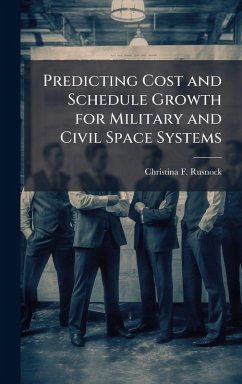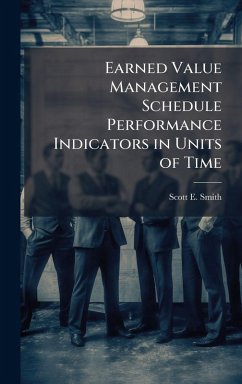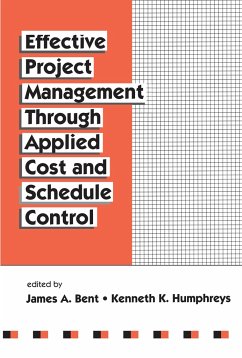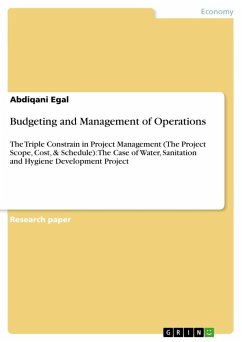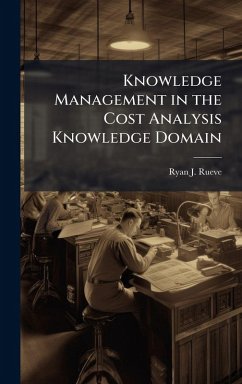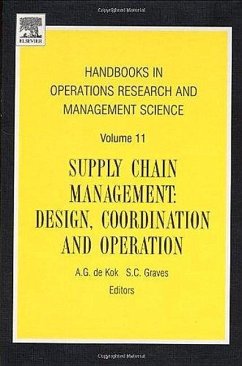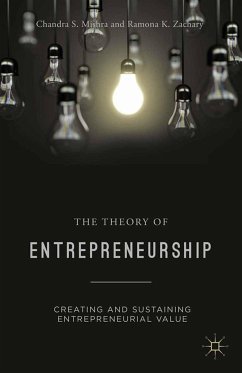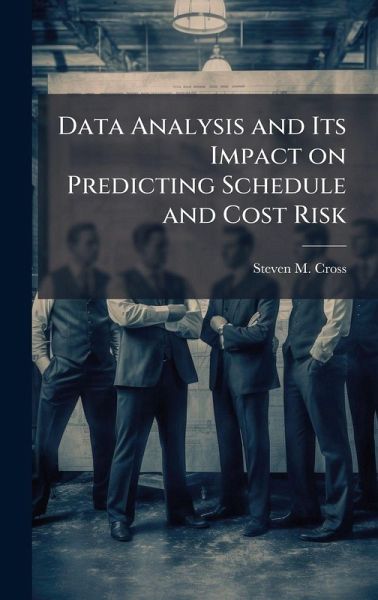
Data Analysis and Its Impact on Predicting Schedule and Cost Risk
Versandkostenfrei!
Versandfertig in über 4 Wochen
29,99 €
inkl. MwSt.
Weitere Ausgaben:

PAYBACK Punkte
15 °P sammeln!
Many databases rely on documents (research) of the past to input data to create a comprehensive database. The Selected Acquisition Report (SAR) is one such document. The SARs are pervasive documents that have undergone decades of scrutiny by Congress and watchdog organizations such as the Government Accountability Office. Since the SAR has undergone such massive evolutionary changes, creating an accurate acquisition database presents a daunting task for the analyst and researcher alike. This research concerns itself with one such database. From this prior research database, we look to fill in ...
Many databases rely on documents (research) of the past to input data to create a comprehensive database. The Selected Acquisition Report (SAR) is one such document. The SARs are pervasive documents that have undergone decades of scrutiny by Congress and watchdog organizations such as the Government Accountability Office. Since the SAR has undergone such massive evolutionary changes, creating an accurate acquisition database presents a daunting task for the analyst and researcher alike. This research concerns itself with one such database. From this prior research database, we look to fill in missing data. We first conduct a literature review to determine why we have database discontinuity. Indeed, a large part of our review entails SARs. We find there are no other complete sources for acquisition reporting. Also, the reason for missing data stems from 30 years of change within the Department of Defense administration. In addition, we grow concerned about the number of rebaselines a program undergoes in its lifecycle. This work has been selected by scholars as being culturally important, and is part of the knowledge base of civilization as we know it. This work was reproduced from the original artifact, and remains as true to the original work as possible. Therefore, you will see the original copyright references, library stamps (as most of these works have been housed in our most important libraries around the world), and other notations in the work. This work is in the public domain in the United States of America, and possibly other nations. Within the United States, you may freely copy and distribute this work, as no entity (individual or corporate) has a copyright on the body of the work. As a reproduction of a historical artifact, this work may contain missing or blurred pages, poor pictures, errant marks, etc. Scholars believe, and we concur, that this work is important enough to be preserved, reproduced, and made generally available to the public. We appreciate your support of the preservation process, and thank you for being an important part of keeping this knowledge alive and relevant.



